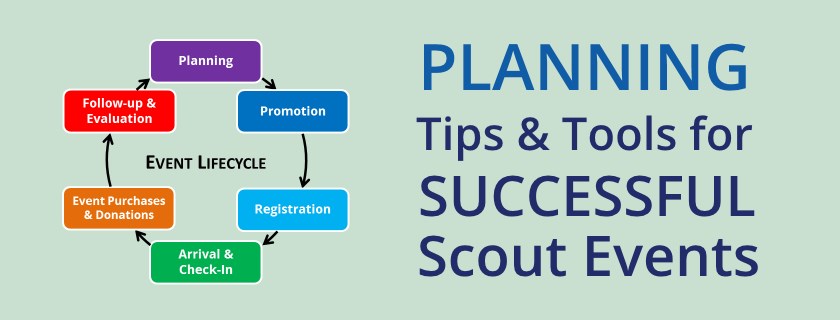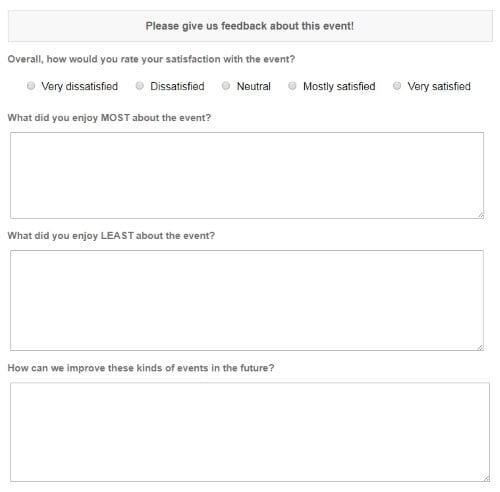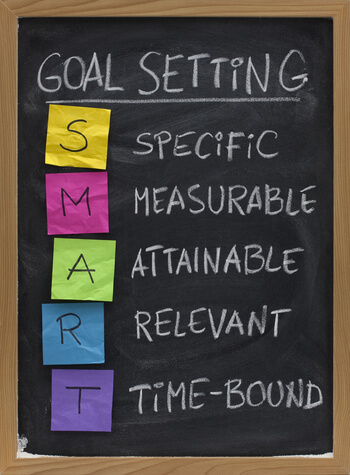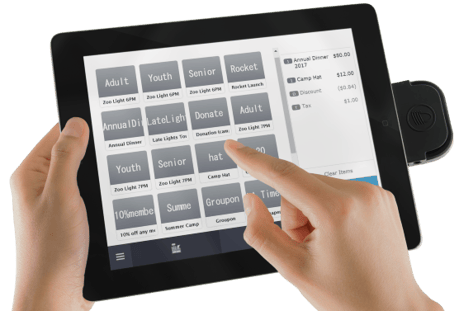Planning Tips and Tools for Successful Scout Events

- Review feedback from other scout events
- Set SMART goals for the scout event
- Choose reporting and analytics tools for scout event data
- Identify the unique logistics issues for the scout event

Review Feedback from Other Scout Events
Review outcomes of similar events to identify strengths, weaknesses and improvement opportunities. If you didn’t gather feedback in the past, you can still ask staff, leaders and participants what worked well and what didn’t. [caption id="attachment_2097" align="aligncenter" width="500"] Asking for feedback helps improve planning for future scout events.[/caption]
Asking for feedback helps improve planning for future scout events.[/caption] 
Set SMART Goals for the Scout Event
You won't know if your scout event was successful if you don't set and measure the goals that define success! Many organizations use the SMART model to define their goals, which states that all goals must be Specific, Measurable, Achievable, Relevant and Time-Based (which means that the goals will be reached by a certain date). For events and programs, goals might include number of attendees, amount of funds raised or completion of badge requirements. Whatever goals you choose, make sure that you have a plan in place to measure them.

Using the SMART model can help you develop goals and evaluate the success of any scouting event. 
Choose Reporting and Analytics Tools for Scout Event Data
Make sure you have reporting and analytics tools to help you visualize and understand the data that you collect toward your goals as well as to interpret last year’s results (if you’re fortunate enough to have that information). Your needs might be as simple as creating charts in a spreadsheet but if you’re looking at year-over-year data or want to compare how different groups perform, it’s best to have all your information in a single database with a reporting tool that lets you create exactly the report you need.
Identify the Unique Logistics Issues for Every Scout Event
According to veteran event planners, it's never too early to identify and plan for every logistical detail of your event. If you’ve asked participants for event feedback in the past, you’ll have some good ideas about what works and what doesn’t. You can also talk to venue staff about what historically works well in their space. Considerations may include:- Parking. Is adequate parking available or should groups make greater-than-usual efforts to carpool?
- Check-in. Where will checkin stations be located? How can you validate tickets quickly? Can you handle walk-up registrations and last-minute changes? Are you printing name tags for participants to pick up, providing pens and stickers for guests to write their own or foregoing nametags altogether? How many people should be assigned to manage checkin?
- Tables, seating, stations or supplies. If you’re hosting a seated event, you’ll have to restrict capacity to the number of chairs available. If you’re holding a less formal program where scouts move from station to station learning and applying new skills, you’ll need to make sure that you have adequate supplies, space and supervising adults. If you’re expecting large numbers of participants, consider making the activities non-sequential—that way, scouts can be directed to start anywhere without creating a bottleneck at the first station. If the activities must be sequential, make sure there are open-ended, relevant and engaging opportunities after the last formal activity so the first groups of scouts who complete the program will remain interested and on-topic.
- Time management. If the event is activity-based, make sure there’s sufficient time for everyone to complete the activities. If it’s a participation, presentation or awards event, you’ll want to allot the right amount of time to different speakers, entertainer and other parts of the programs.
- AV equipment. Make sure that everything you’ll need is available and fully tested before the event.
- Meals or refreshments. If meals or refreshments are part of the event, you’ll want to ensure that they can be served quickly. What will you serve, when will it arrive, where will store it beforehand and where will you serve it? How many people are needed to work in the refreshments station? Are food and beverage included in the registration cost or are they a separate purchase? If separate, how can you make sure that the purchase and pickup line moves quickly? One solution is to sell vouchers outside the line so the servers only have to handle food and not worry about payments. You can also pre-sell vouchers as part of the registration process—that will help calculate demand and minimize payment lines.
- Optional sales. Optional items like event T-shirts, patches, raffle tickets, food and drink vouchers and more. Add-on sales can raise more money, but you may wish to pre-sell as much as possible to ensure adequate inventory and make event lines shorter.
- Donations. Is it appropriate to ask for donations at the event? If so, you’ll need to decide who’ll ask, when to ask, and how to collection donations quickly and easily.

What event management and planning tools and tips do you use to make sure that your scout events run smoothly? Let us know!


